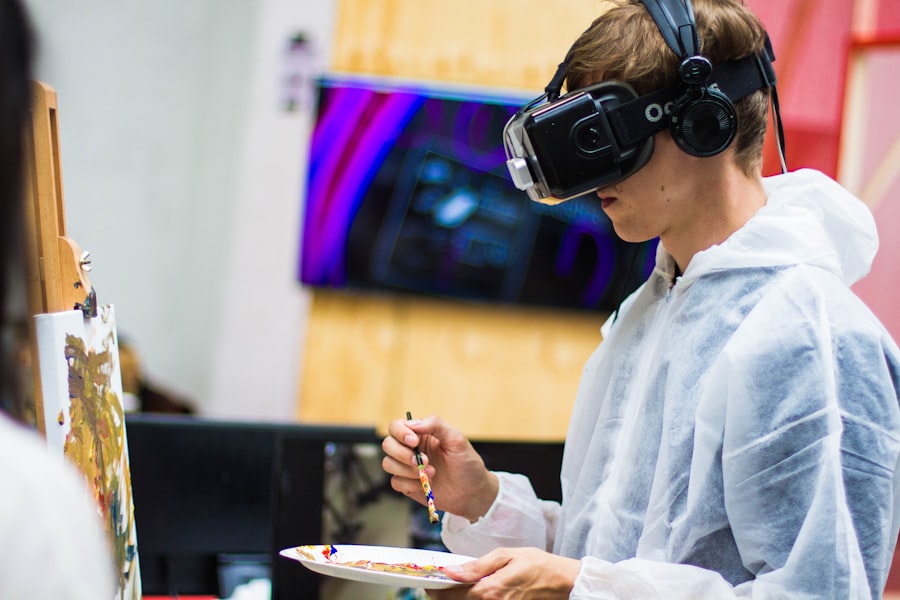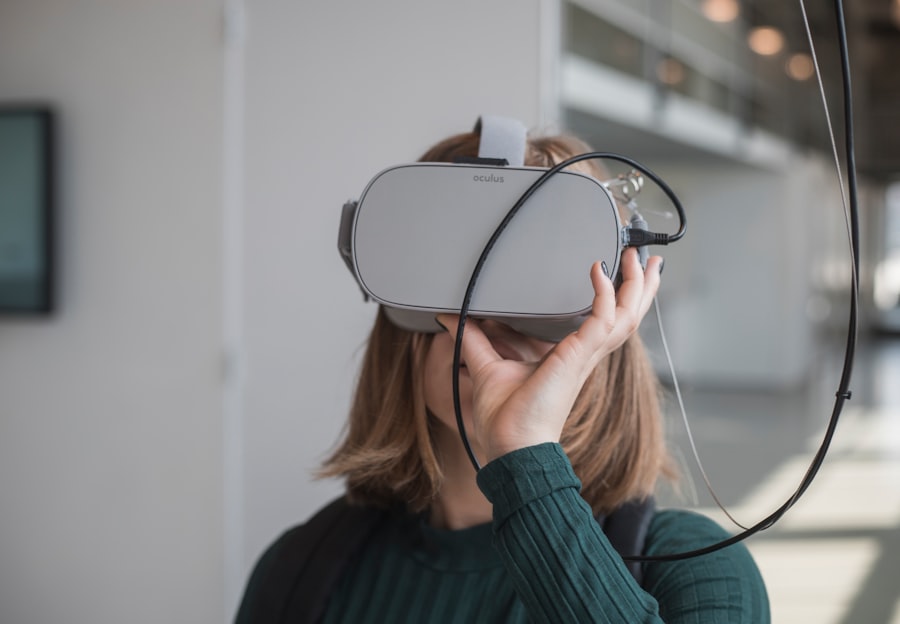The Metaverse represents a convergence of physical and digital realities, a vast and immersive virtual environment where users can interact with each other and digital objects in real-time. This concept has evolved from early virtual worlds and online gaming platforms into a more sophisticated ecosystem that encompasses augmented reality (AR), virtual reality (VR), and even elements of the internet itself. The term “Metaverse” was popularized by Neal Stephenson in his 1992 science fiction novel “Snow Crash,” where he envisioned a digital universe that mirrored the physical world.
Today, the Metaverse is not merely a fictional concept but an emerging reality that is being shaped by advancements in technology, social media, and user-generated content. At its core, the Metaverse is about creating shared spaces that transcend geographical boundaries. Users can engage in various activities, from attending virtual concerts to participating in business meetings, all within a digital landscape.
This interconnectedness is facilitated by technologies such as blockchain, which ensures secure transactions and ownership of digital assets, and artificial intelligence, which enhances user experiences through personalized interactions. As companies like Meta (formerly Facebook), Microsoft, and Epic Games invest heavily in building their versions of the Metaverse, the potential for a new digital frontier becomes increasingly tangible.
Key Takeaways
- The Metaverse is a collective virtual shared space, created by the convergence of virtually enhanced physical reality and physically persistent virtual reality.
- Navigating the virtual landscape involves using avatars to move through different virtual environments and interact with other users.
- Creating your virtual identity allows users to customize their avatars and express themselves in the virtual world.
- Social interactions in the Metaverse include virtual gatherings, events, and communication with other users through text, voice, and video.
- The virtual economy and marketplace in the Metaverse offer opportunities for buying, selling, and trading virtual goods and services.
Navigating the Metaverse requires an understanding of its diverse environments and platforms. Each virtual space offers unique experiences, ranging from expansive open worlds to more structured environments like virtual offices or social hubs. Users can traverse these landscapes using avatars—digital representations of themselves that can be customized to reflect personal style or identity.
The ability to create and modify avatars adds a layer of personalization that enhances user engagement and fosters a sense of belonging within these virtual communities. Moreover, the architecture of the Metaverse is designed to be user-friendly, allowing individuals to explore without extensive technical knowledge. Many platforms employ intuitive interfaces that guide users through their initial experiences, making it easier for newcomers to acclimate.
For instance, platforms like Roblox and Second Life have established themselves as entry points for many users, offering tutorials and community support to help individuals navigate their virtual surroundings. As users become more familiar with these environments, they can discover hidden gems—unique experiences or communities that may not be immediately visible but offer rich interactions and opportunities for connection.
Creating Your Virtual Identity

In the Metaverse, crafting a virtual identity is a fundamental aspect of the user experience. This identity is often expressed through avatars, which can be tailored in countless ways to reflect personal preferences, cultural backgrounds, or even fantastical elements that defy the laws of physics. The freedom to design one’s avatar allows users to explore aspects of their identity that may not be possible in the physical world.
For example, someone who feels constrained by societal norms might choose to create an avatar that embodies their true self or an idealized version of who they wish to be. Beyond visual representation, virtual identities can also encompass behaviors and interactions within the Metaverse. Users can adopt different personas depending on the context—professional in a virtual meeting, playful in a gaming environment, or artistic in a creative space.
This fluidity allows for a rich tapestry of social interactions and experiences. Additionally, as users engage with others in these environments, they build reputations based on their actions and contributions, further shaping their virtual identities. This dynamic interplay between self-expression and social perception creates a complex landscape where individuals can explore their identities in multifaceted ways.
Social Interactions in the Metaverse
| Platform | Number of Users | Number of Interactions |
|---|---|---|
| Facebook Horizon | 1 million | 10 million |
| VRChat | 2 million | 15 million |
| Rec Room | 3 million | 20 million |
Social interactions within the Metaverse are diverse and multifaceted, reflecting the complexities of human relationships in both physical and digital realms. Users can connect with friends, meet new people, or engage with communities centered around shared interests. The immersive nature of the Metaverse enhances these interactions by allowing for real-time communication through voice chat, gestures, and even facial expressions captured by VR technology.
This level of engagement fosters a sense of presence that is often lacking in traditional online communication methods. Moreover, social dynamics in the Metaverse can mirror those found in real life, including the formation of friendships, rivalries, and collaborative partnerships. Users often participate in group activities such as gaming sessions, virtual events, or collaborative projects, which can strengthen bonds and create lasting memories.
These social experiences contribute to a sense of community that transcends geographical limitations, allowing individuals from diverse backgrounds to come together in shared spaces.
Virtual Economy and Marketplace
The Metaverse is not just a social space; it also represents a burgeoning economy characterized by digital assets and virtual currencies. Users can buy, sell, and trade items ranging from virtual real estate to unique digital art pieces known as non-fungible tokens (NFTs). This marketplace operates on principles similar to traditional economies but is often driven by supply and demand dynamics unique to digital environments.
For example, virtual land in platforms like Decentraland has seen significant appreciation in value as more users seek to establish their presence within these digital landscapes. Blockchain technology plays a crucial role in this virtual economy by providing transparency and security for transactions. Smart contracts facilitate automated agreements between buyers and sellers, ensuring that ownership rights are clearly defined and enforced.
As users invest in digital assets—whether for personal enjoyment or as speculative investments—the potential for wealth generation within the Metaverse becomes increasingly apparent. Companies are also exploring ways to monetize their offerings through subscription models, advertising, and branded experiences that enhance user engagement while generating revenue.
Entertainment and Recreation in the Metaverse

Entertainment within the Metaverse encompasses a wide array of activities designed to engage users creatively and socially. Virtual concerts have gained immense popularity, allowing artists to perform live for global audiences without the constraints of physical venues. Platforms like Fortnite have hosted concerts featuring major artists such as Travis Scott and Ariana Grande, drawing millions of viewers who can interact with each other while enjoying the performance.
These events not only showcase musical talent but also highlight the potential for immersive storytelling through visuals and interactivity. In addition to concerts, gaming remains a cornerstone of entertainment in the Metaverse. Multiplayer games offer expansive worlds where players can collaborate or compete against one another in real-time.
Titles like “Roblox” allow users to create their own games and experiences, fostering creativity while providing opportunities for social interaction. Furthermore, virtual reality experiences such as escape rooms or adventure simulations offer thrilling recreational activities that immerse users in fantastical scenarios. The blend of entertainment options available within the Metaverse ensures that there is something for everyone, catering to diverse interests and preferences.
Challenges and Opportunities in the Virtual Realm
While the Metaverse presents exciting opportunities for innovation and connection, it also faces several challenges that must be addressed for its sustainable growth. One significant concern is privacy and data security. As users engage with various platforms, they generate vast amounts of personal data that could be vulnerable to breaches or misuse.
Ensuring robust security measures while maintaining user trust is paramount for companies operating within this space. Another challenge lies in creating inclusive environments that cater to diverse populations. As the Metaverse expands, it is essential to consider accessibility for individuals with disabilities or those from different cultural backgrounds.
Developers must prioritize inclusivity by designing interfaces that accommodate various needs and fostering communities that celebrate diversity rather than perpetuating exclusionary practices. Conversely, these challenges also present opportunities for innovation. Companies can develop new technologies focused on enhancing security protocols or creating more inclusive design practices.
Additionally, as more individuals enter the Metaverse seeking social connections or economic opportunities, there is potential for new business models to emerge that cater specifically to these needs.
The Future of the Metaverse
Looking ahead, the future of the Metaverse appears promising yet complex as it continues to evolve alongside technological advancements and societal shifts. As more individuals embrace virtual experiences for work, play, and socialization, we may witness an increasing integration of the Metaverse into everyday life. This could manifest through hybrid models where physical events incorporate virtual elements or vice versa—creating seamless transitions between realities.
Furthermore, advancements in technology such as 5G connectivity will enhance user experiences by reducing latency and improving graphics quality within virtual environments. As hardware becomes more accessible—such as affordable VR headsets—wider audiences will be able to participate in immersive experiences previously limited to niche markets.
As this digital frontier unfolds before us, it holds immense potential for redefining how we interact with technology and each other in profound ways.
If you’re interested in exploring how the metaverse intersects with real-world applications, particularly in the context of conferences and events, you might find this article insightful. It delves into the transformative potential of the metaverse in hosting virtual gatherings that transcend traditional physical limitations, offering a new dimension of interaction and engagement. You can read more about it by visiting Metaverse and the Real World: Conferences and Events with Metaverse. This piece provides a comprehensive look at how virtual environments can enhance and expand the possibilities for global connectivity and collaboration.
FAQs
What is the metaverse?
The metaverse is a collective virtual shared space, created by the convergence of virtually enhanced physical reality and physically persistent virtual reality. It is a concept that has gained popularity in recent years due to advancements in technology and virtual reality.
What is the target metaverse?
The target metaverse refers to the specific metaverse being developed by the company Target. It is a virtual space that aims to provide an immersive and interactive shopping experience for its customers.
How will the target metaverse work?
The target metaverse will allow users to create personalized avatars and navigate through virtual Target stores. They will be able to browse and purchase products, interact with other users, and participate in virtual events and activities.
What are the potential benefits of the target metaverse?
The target metaverse has the potential to offer a more engaging and convenient shopping experience for customers. It may also provide opportunities for social interaction and entertainment within the virtual space.
When will the target metaverse be available?
As of now, there is no specific release date for the target metaverse. Target is likely still in the development and testing phase of the project.

Leave a Reply